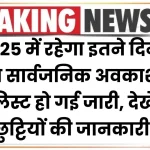
Fixed Deposits (FDs) have long been a preferred savings option for many, offering stable returns and low risk. However, if you’re planning to invest in an FD soon, you may want to reconsider. FD interest rates are falling, and there are some significant reasons behind this trend.
In this article, we’ll break down why FD interest rates are decreasing, how it affects you, and what you can do to maximize your savings. Whether you’re a seasoned investor or someone just getting started, this guide will help you make an informed decision.
FD Interest Rates Are Falling
| Factor | Impact on FD Interest Rates |
|---|---|
| RBI Monetary Policy | Lower repo rates reduce FD interest rates |
| Inflation Trends | Higher inflation can erode real returns |
| Liquidity in Banks | Excess liquidity leads to lower interest rates |
| Economic Growth | Slowdown results in cautious banking policies |
| Alternative Investments | Mutual funds, bonds offer competitive returns |
The falling FD interest rates are a result of RBI policies, inflation trends, and economic factors. While FDs remain a safe investment, their declining returns make it essential for investors to explore better alternatives.
If you rely on FDs for savings, consider locking in higher rates, diversifying your investments, and staying informed about RBI policies.
Why Are FD Interest Rates Falling?
1. RBI’s Monetary Policy & Repo Rate Cuts
The Reserve Bank of India (RBI) plays a crucial role in determining interest rates in the economy. One of the primary tools at its disposal is the repo rate, which is the rate at which RBI lends money to commercial banks.
- When the repo rate is cut, banks can borrow money at a cheaper rate.
- This leads to a decrease in lending rates, but it also results in lower FD interest rates.
For example, in recent years, the RBI has reduced the repo rate multiple times to boost economic growth. This directly impacts FD interest rates, causing them to decline.
2. Inflation and Its Role
Inflation affects your real returns on FD investments. If inflation is higher than the FD interest rate, your actual purchasing power decreases over time.
For instance:
- If an FD offers 6% interest, but inflation is at 7%, your real return is negative.
- This discourages long-term investments in FDs and pushes investors towards alternatives like stocks, mutual funds, and bonds.
3. Excess Liquidity in Banks
Banks determine FD interest rates based on their need for funds. When banks have excess liquidity, they don’t need to attract depositors with high interest rates.
- During the COVID-19 pandemic, people saved more, and credit demand was lower.
- This resulted in banks having ample funds, reducing their need to offer competitive FD rates.
4. Economic Slowdown and Banking Caution
During periods of economic slowdown, banks tend to be cautious with lending. This affects deposit rates because banks adjust interest rates based on credit growth and risk assessment.
- If banks anticipate lower demand for loans, they may reduce FD rates to maintain profitability.
- This ensures that they don’t have to pay high interest to depositors while lending at lower rates.
5. The Rise of Alternative Investment Options
With FD rates falling, many investors are turning to other investment options that offer better returns. Some popular choices include:
- Mutual Funds (average returns of 10-12%)
- Government Bonds & Debentures (7-9%)
- Real Estate & Gold Investments
This shift in investment preferences puts pressure on banks to reduce FD rates further to balance their financial structures.
see also: You will earn a lot by doing FD in post office, earn Rs 2,24,974 from interest only
What Should Investors Do Now?
1. Lock in Higher Rates with Long-Term FDs
If you still prefer fixed deposits, consider investing in long-term FDs while rates are still relatively higher.
- Many banks offer higher rates for 5-10 year FDs.
- Senior citizens often get an extra 0.50% interest rate.
2. Diversify Your Portfolio
Relying solely on FDs may not be the best strategy anymore. Instead, diversify your portfolio by investing in:
- Debt Mutual Funds: These provide stability and slightly better returns than FDs.
- Equity Mutual Funds: Higher risk, but long-term growth potential.
- PPF (Public Provident Fund): A safe, government-backed investment.
- Sovereign Gold Bonds (SGBs): Hedge against inflation.
3. Consider Corporate FDs
Some non-banking financial companies (NBFCs) and corporates offer higher FD interest rates than traditional banks.
- These corporate FDs can offer up to 8-9% returns.
- However, they come with slightly higher risk, so research their credit ratings (CRISIL, ICRA) before investing.
4. Keep an Eye on RBI Announcements
The RBI’s monetary policies directly affect FD rates. Stay updated on repo rate changes and adjust your investments accordingly.
see also: SBI RD Scheme Deposit ₹5000 and get ₹3,59,667 after 5 years
FD Interest Rates Are Falling FAQs
1. Will FD rates increase in the future?
FD rates are linked to economic conditions and RBI policies. If inflation rises and the RBI increases repo rates, FD rates may go up again. However, in the short term, a downward trend is expected.
2. Is it safe to invest in FDs now?
Yes, FDs remain a safe investment as they are insured up to ₹5 lakh per depositor by DICGC (Deposit Insurance and Credit Guarantee Corporation). However, for higher returns, consider diversifying your portfolio.
3. Which bank offers the highest FD interest rates?
Interest rates vary by bank and tenure. You can check the latest FD rates on the official websites of major banks like SBI, HDFC, ICICI, and Axis Bank.
4. Should senior citizens invest in FDs?
Yes, many banks offer higher interest rates (up to 0.50% extra) for senior citizens. Special senior citizen FDs from banks like SBI (WeCare FD) and HDFC Senior Citizen FD provide better returns.
5. Are there tax benefits on FDs?
Yes, tax-saving FDs (with a 5-year lock-in) qualify for Section 80C benefits under the Income Tax Act. However, FD interest is taxable, so consider post-tax returns before investing.











